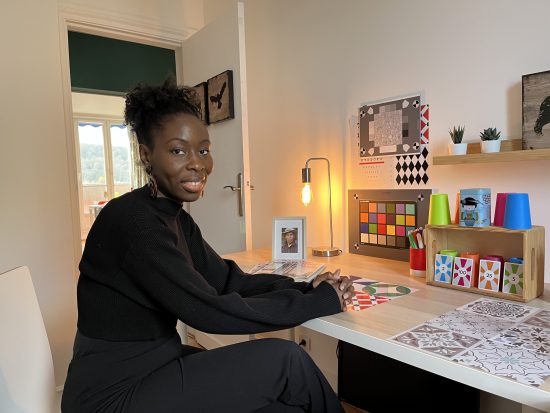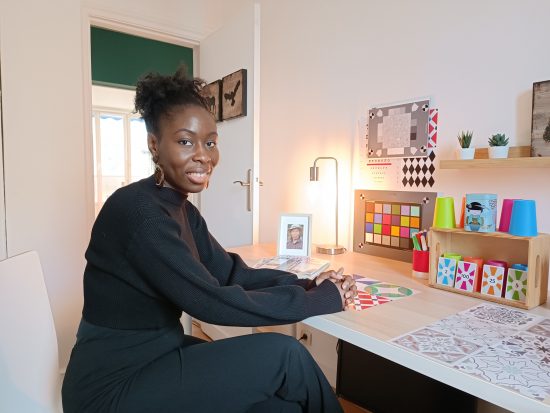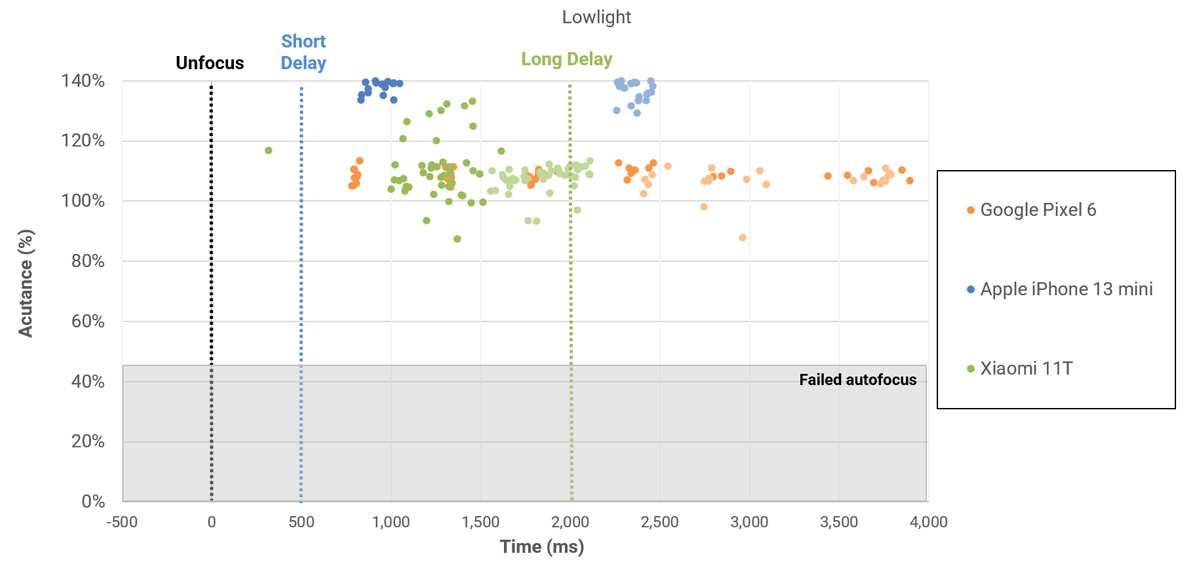Within Google’s Pixel line of smartphones, the Pixel 6 is the option for those users who prefer compact dimensions over maximum screen size. It’s powered by the same Tensor chipset as the Google Pixel 6 Pro but comes with a smaller 6.4-inch display and therefore as an overall smaller package. Other differences include less RAM (8 vs 12GB) and a smaller battery.
In the camera department the Pixel 6 lacks the Pro models dedicated tele camera but uses the same 50 MP primary module and 12.5 MP ultra-wide as the flagship model. Read our review to find out what that means for the Pixel 6’s performance in the DXOMARK Camera tests.
Key camera specifications:
- Primary: 50 MP 1/1.31″ sensor, 1.2µm pixels, 24 mm equivalent f/1.85-aperture lens, OIS, Dual PDAF
- Ultra-wide: 12.5 MP 1/2.86″ sensor, 1.25μm pixels, 16mm equivalent f/2.2-aperture lens
- LDAF (laser detection autofocus) sensor
- LED Flash
- 4K at 30/60fps (4K/30fps tested)
About DXOMARK Camera tests: For scoring and analysis in our smartphone camera reviews, DXOMARK engineers capture and evaluate over 3000 test images and more than 2.5 hours of video both in controlled lab environments and in natural indoor and outdoor scenes, using the camera’s default settings. This article is designed to highlight the most important results of our testing. For more information about the DXOMARK Camera test protocol, click here. More details on how we score smartphone cameras are available here.
Test summary
Scoring
Sub-scores and attributes included in the calculations of the global score.
Google Pixel 6


Use cases & Conditions
Use case scores indicate the product performance in specific situations. They are not included in the overall score calculations.
Outdoor
Photos & videos shot in bright light conditions (≥1000 lux)
Indoor
Photos & videos shot in good lighting conditions (≥100lux)
Lowlight
Photos & videos shot in low lighting conditions (<100 lux)
Friends & Family
Portrait and group photo & videos
Pros
- Good detail in bright light and indoors
- Nice and accurate color
- Natural detail and good shadow detail
- Fast and consistent autofocus in bright light and indoors
- Good detail in close and mid range tele shots
- Good video stabilization
- Good detail in video
- Accurate video exposure and dynamic range
Cons
- Noise in all conditions, especially in the shadows
- Lack of detail in low light
- Lack of detail in long range tele shots
- Bokeh effect not visible in preview
- Unstable color in video
- Noise in video, especially indoors and in low light
- Occasionally unstable video autofocus in low light
- Video artifacts including aliasing, flickering and judder
With a DXOMARK Camera score of 132, the Google Pixel 6 secures a position just outside the top ten in our overall Camera ranking — an outstanding performance at this price point, which also means the Google phone is the lone leader in the High-End segment ($400 to $599) and currently the best option for mobile photographers who prefer smaller devices.
In this slightly difficult indoor scene, the Pixel 6 does very well, offering nice contrast, good fine detail on the subject, and overall natural white balance and color. Some noise is visible in the shadows, though.
When shooting still images the camera delivers excellent exposure and contrast as well as portrait color and skin tones, and shows no major shortcomings in any test areas. Target exposure is accurate most of the time, only in difficult backlit scenes can images sometimes be a little too dark, and good contrast is maintained at all times. The autofocus is fast and reliable in most situations, but we did notice some failures in low light.
The relatively large image sensor of the primary camera provides a natural bokeh that works well for portrait shots at short distances, but on the downside, people or objects located at the back of multi-plane scenes can be out of focus. Color fringing and aliasing are often visible, but most other unwanted image artifacts are very well under control.
The preview image on the display generally gives you a very good idea of the final capture and zooming is very smooth but the bokeh effect in portrait mode is not simulated at all, you’ll only see it after capture.
When using the Pixel 6’s ultra-wide and tele cameras to zoom out or in, target exposure is accurate at all zoom settings. The field of view of the ultra-wide is not the widest that we have seen, though, and the lack of a dedicated tele lens means that images captured at long tele settings lack detail.
In video mode the Pixel provides effective stabilization in all conditions, resulting in stable and smooth footage. Exposure tends to be on the bright side, with a wide dynamic range, capturing good detail in both highlight and shadow areas. Detail is good in videos, too. On the downside, white balance and exposure can be a little unstable under changing light conditions and most clips show some noise, especially when recording under typical indoor lighting or in low light. In low light, our testers also observed some autofocus instabilities; some video artifacts, including aliasing, flickering, and judder effects, were also noticeable.





DXOMARK encourages its readers to share comments on the articles. To read or post comments, Disqus cookies are required. Change your Cookies Preferences and read more about our Comment Policy.